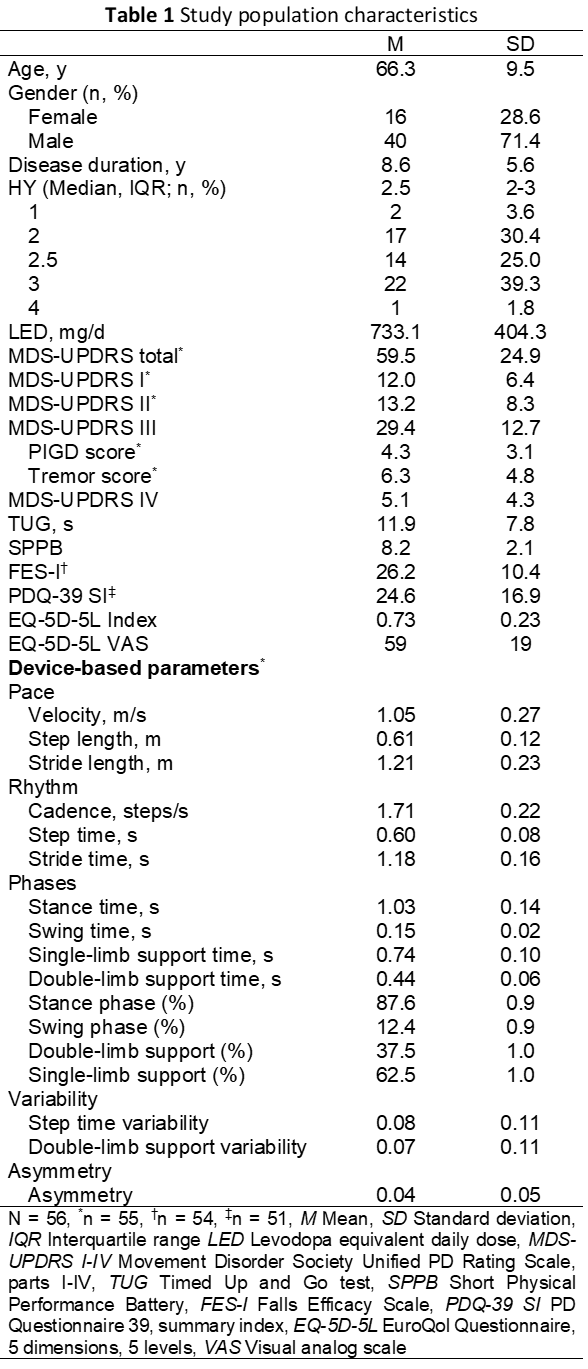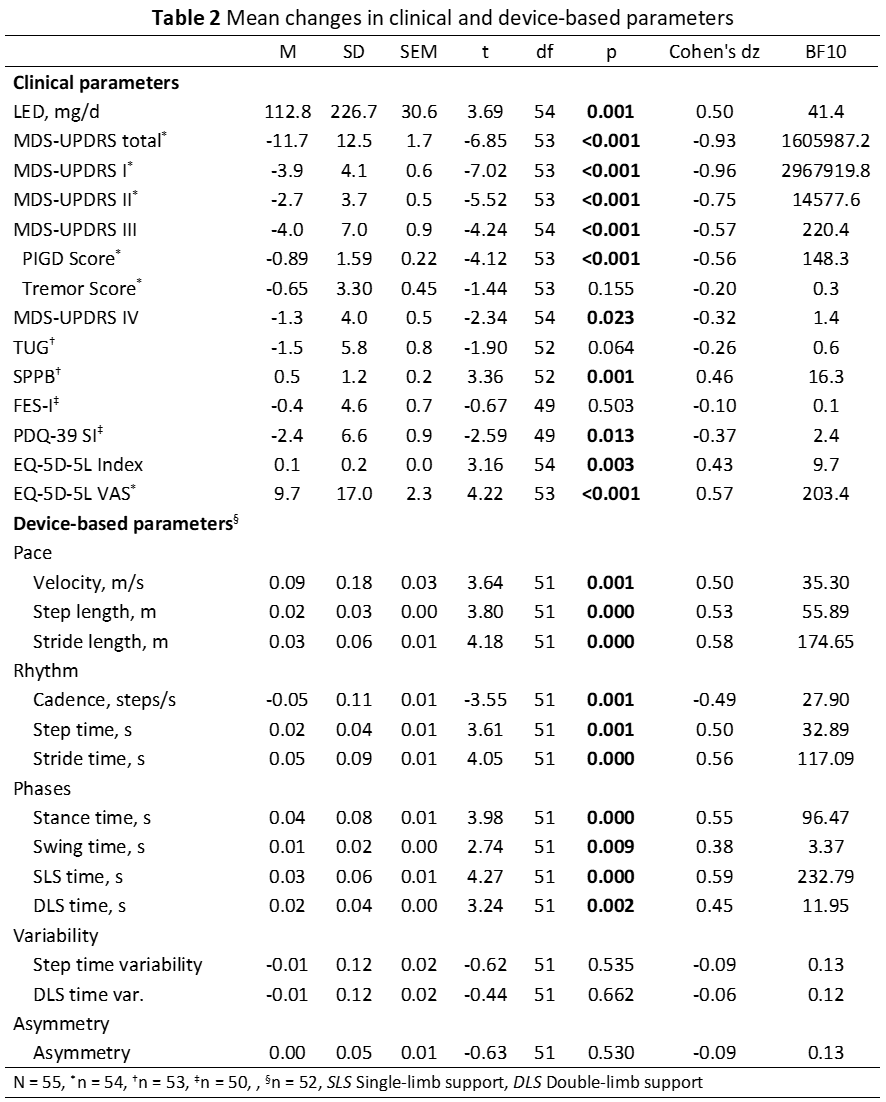Objective: To determine predictors of improvement in motor experiences of daily living (m-EDL) after a multidisciplinary inpatient ‘PD multimodal complex treatment’ (PD-MCT) and clarify the suitability of device-based parameters as predictors.
Background: PD-MCT is implemented throughout Germany and has been shown to improve motor and non-motor symptoms of PD. However, little research has been done on predictors of improvement in m-EDL which is important for the preselection of participants.
Method: PD patients were assessed clinically and by means of a wearable digital device placed at the lower back (L5) for a 20-m straight walking task, at admission (T1) to and discharge (T2) from a two-week PD-MCT at a university hospital. The primary outcome was the change in m-EDL score (as defined by the MDS-UPDRS II). Secondary outcomes were motor and non-motor symptoms, quality of life, and a range of spatiotemporal gait parameters [table1]. Bayesian t-tests were used to assess changes in outcomes. To identify predictors of improvement (dichotomous outcome according to a previously defined minimal clinically important difference T2-T1 of ≥ 3.05 points on MDS-UPDRS II), a stepwise multiple logistic regression model was calculated after exploratory regression analyses and exclusion of multicollinearity.
Results: Mean m-EDL scores improved significantly in 35.7% (20) of 56 PD patients (age M ± SD: 66.3 ± 9.5 y; median ± IQR HY stage: 2.5 ± 0.5) along with secondary outcomes including motor complications, quality of life, gait velocity and step length [table2]. Lower age (adjusted OR [aOR]: 0.80, 95% CI: 0.70-0.91) and higher m-EDL score (aOR: 1.25, 95% CI: 1.09-1.42) significantly predicted improvement in m-EDL in a multivariate model correctly predicting 83.3% of outcomes [table3]. As a trend, belonging to the extreme quartile of step time variability (aOR: 0.14 , 95% CI: 0.02-1.09 ) as well as to male gender (aOR: 0.24, 95% CI: 0.04-1.45) were negative predictors.
Conclusion: Younger, female PD patients with high m-EDL impairment and low step time variability may benefit most from a short-term multidisciplinary inpatient treatment in terms of m-EDL. The potential of device-based gait assessment as a possible time- and cost-effective tool for PD-MCT preselection needs further investigation.
To cite this abstract in AMA style:
R. Scherbaum, J. Oppermann, A. Moewius, V. Tschentscher, J. Geritz, J. Welzel, C. Hansen, R. Gold, W. Maetzler, L. Tönges. Clinical and device-based predictors of improvement in motor experiences of daily living after a short-term multidisciplinary inpatient treatment: a cohort study [abstract]. Mov Disord. 2022; 37 (suppl 2). https://www.mdsabstracts.org/abstract/clinical-and-device-based-predictors-of-improvement-in-motor-experiences-of-daily-living-after-a-short-term-multidisciplinary-inpatient-treatment-a-cohort-study/. Accessed December 25, 2025.« Back to 2022 International Congress
MDS Abstracts - https://www.mdsabstracts.org/abstract/clinical-and-device-based-predictors-of-improvement-in-motor-experiences-of-daily-living-after-a-short-term-multidisciplinary-inpatient-treatment-a-cohort-study/



